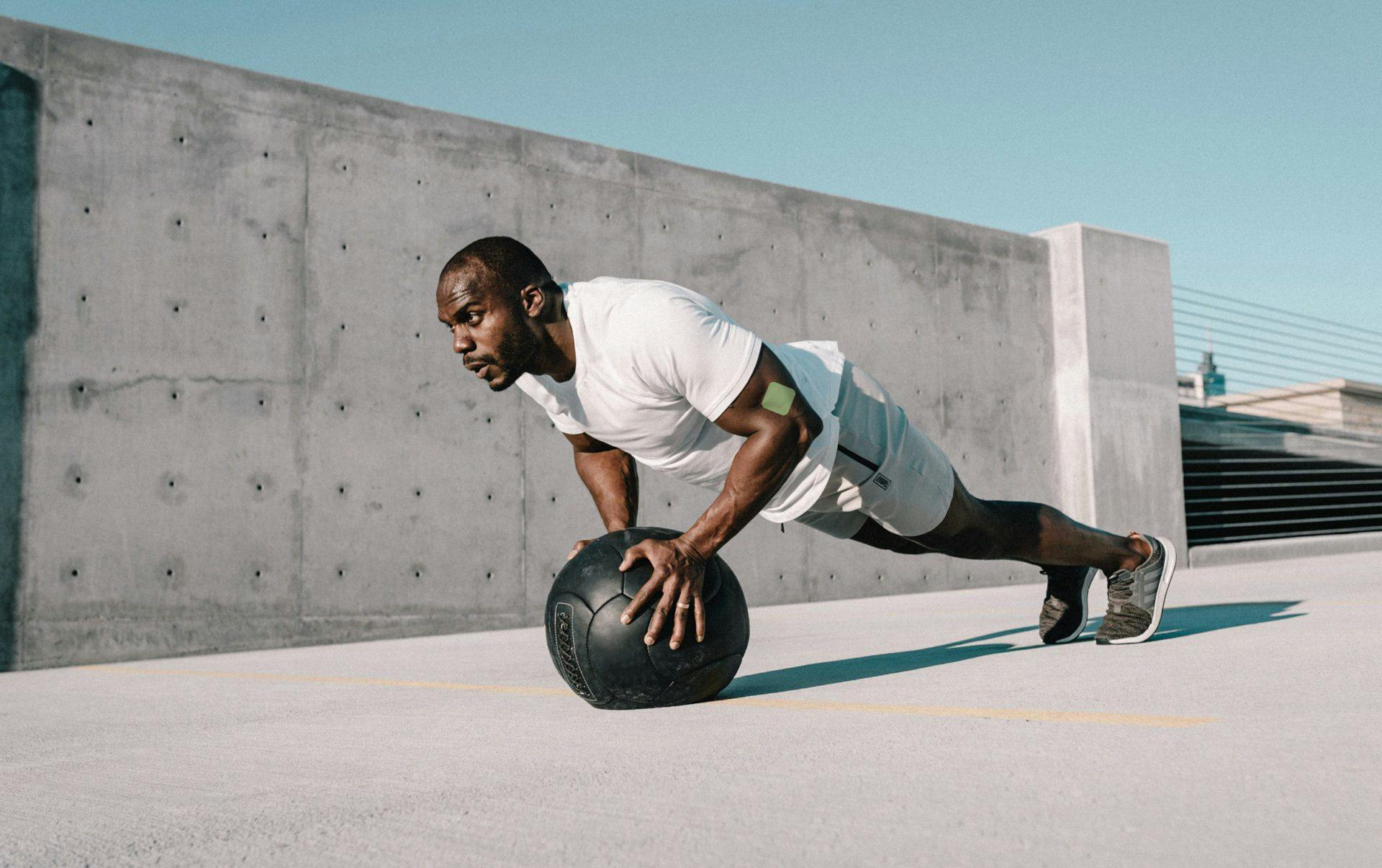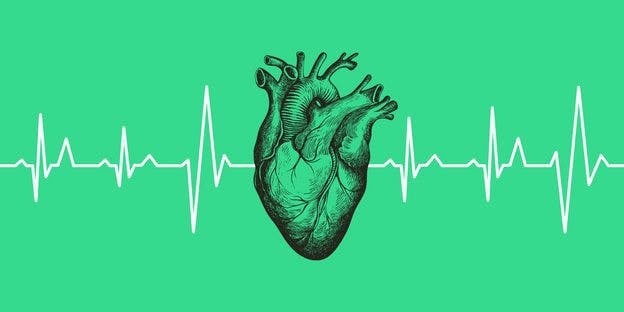Weed and Cardio: Does Cannabis Affect Aerobic Performance?

Article written by
Elena Schmidt
Content reviewed by

Dr. Lewis JasseyMedical Director - Pediatric Medicine
There isn’t a lot of direct clinical research on if cannabis benefits cardio workouts. However, one study reported that 81% of respondents said they approve of using cannabis with exercise.
Other cannabis users report that the plant increases enjoyment and motivation while supporting post-workout recovery.
Conversely, combining marijuana and aerobic exercise could yield cardiovascular risks in specific populations. Research shows THC causes acute, dose-dependent blood pressure and heart rate increases.
As a result, weed and cardio can potentially increase the chance of heart attacks in people with heart disease. Therefore, combining marijuana and aerobic exercise could yield cardiovascular risks in specific populations.
Get your medical marijuana card
Connect with a licensed physician online in minutes.
What Is Cardio?
Cardio is anything that raises the heart rate and increases breathing for a prolonged period. During cardio, blood vessels expand to increase muscles’ oxygen, and the respiratory system must work harder. The body also releases natural painkillers called endorphins, which improve mood. The endocannabinoid, anandamide, also contributes to exercise’s feel-good effects.
Cardio challenges and strengthens the cardiovascular system by increasing its capacity to take in oxygen, pump blood to the working muscles, and clear carbon dioxide and other waste products from the body.
Examples of cardio exercise include:
- Running
- Power walking
- Swimming
- Cycling
- Jumping rope
- Dancing
- Organized sports
The Effects of Marijuana on Cardiovascular Fitness
Weed and cardio have an interesting relationship. Contrary to the lazy stoner stereotype, cannabis users are more physically fit than non-users and report finding joy in aerobic exercise while high.
How exactly does cannabis alter one’s mood enough to make them enjoy aerobic exercise? Well, these mood-boosting benefits occur through cannabis’s internal mechanisms of action.
Cannabis consists of hundreds of compounds called cannabinoids, which interact with receptors in the body’s endocannabinoid system. THC is the primary psychoactive compound that binds with cannabinoid receptors in the brain, central nervous system, and immune tissues. This THC interaction allows cannabis to influence behavior, mood, coordination, and pain response.
What does this mean for cardiovascular fitness? Overall, research indicates cannabis use does not dramatically improve cardio performance. In some cases, it may even impair performance. But, in other instances, weed and cardio can unleash various exercise-related benefits that may trickle over into a better overall experience when engaging in cardio-centric activities.
Let’s take a closer look at some of marijuana’s effects on the cardiovascular system and the body as a whole.
Improves Mood and Motivation
Some theories suggest that cannabinoids like THC activate the endocannabinoid system in a way that mimics the “runner’s high.”
Research indicates that the runner’s high typically occurs because exercise increases the body’s endogenous (naturally-produced) cannabinoids, like anandamide. Anandamide binds to brain receptors that make people feel euphoric and alert. Interestingly, THC binds to those same receptors with even greater affinity, indicating marijuana might enhance that blissful feeling.
Anecdotally, marijuana motivates people to exercise more, perhaps due to increased enjoyment. In a 2019 survey, roughly half said that cannabis inspired them to get moving and that cannabis consumption made workouts go by faster, feel less tedious, and kept them “in the zone.”
Reduces Inflammation and Pain
High-impact cardio exercises, such as running and sports, can cause inflammation in connective tissues, especially as people get older. Pairing weed and cardio might allow older or injured individuals to overcome perceived physical limitations.
Studies show that THC and CBD, the non-psychoactive cannabinoid in hemp and marijuana, are powerful agents to alleviate pain and inflammation symptoms. Weed and cardio can help people feel less distracted by pain and tune out fatigue, helping them get into a groove during workouts and stay more active.
Further research shows that cannabis eases muscle stiffness typical of multiple sclerosis, extending to pain, muscle spasms, and sleep quality, which can all help with post-workout recovery.
Alters Motor Skills and Cardiovascular Function
Factors such as an athlete’s reaction time, stability, and coordination ultimately affect performance. Evidence shows cannabis could impair these motor skills.
Cannabis may also present cardiovascular risks.
Cannabinoids have complex effects on the cardiovascular system, including raising the resting heart rate, dilating blood vessels, and making the heart pump harder. As a result, users with established cardiovascular disease can develop chest pain more quickly. The American Heart Association links marijuana use to an increased risk of heart attacks, atrial fibrillation, and heart failure, particularly in the first hour after smoking cannabis.
How to Safely Combine Weed and Cardio
Those looking to reap the benefits of weed and cardio, such as increased motivation, pain management, and muscle recovery, should take note of timing and consumption methods (route of administration). Here are some tips on safely combining weed and cardio:
Avoid Smoking Pre-workout
It’s wise to avoid smoking anything before a cardio workout. Smoking can cause lung damage, and healthy lungs are essential to cardio fitness. Also, most evidence linking marijuana to heart attacks and strokes occurs in the hour after marijuana smoking. So, it can be hard to separate the effects of cannabinoid compounds on the cardiovascular system from the hazards posed by the carcinogens and pollutants in the smoke.
Fortunately, cannabis comes in many forms. Edibles, infused beverages, and tinctures that don’t involve smoking may be better before a cardio workout to boost mood and manage pain. Here is a look at how long each product takes to hit the system so you can plan your workout accordingly:
- Edibles can take an hour or more to kick in, but the effects typically last six hours or more.
- Tinctures act faster, within 30 minutes, and last a couple of hours.
- Infused beverages have the most rapid onset, 10-15 minutes, and may be the best option for runners looking for immediate effects.
However, it must be noted that cannabinoids like THC may increase heart rate even when not smoked, so those susceptible to heart disease may want to avoid high doses of THC before a workout, regardless of the mode of consumption.
Use Topicals Post-workout
For those wanting to reap marijuana’s anti-inflammatory properties post-workout, studies show that CBD-dominant formulas significantly reduce muscle aches and can help relieve inflammation, joint stiffness, and soreness. Topicals such as creams, oils, and salves high in CBD work well for locally targeted recovery. CBD topicals are also great for users seeking workout recovery without psychoactive effects.
The Bottom Line
No current reports on weed and cardio show that cannabis improves aerobic performance. However, cannabis use does have several effects that can benefit a cardio workout, specifically its mood-boosting and muscle-relaxing qualities. Cannabis and isolated CBD also possess significant anti-inflammatory properties, helping with exercise recovery, muscle soreness, and sleep.
However, one specific adverse effect of weed and cardio could be an increased risk of a heart attack. Anyone with a history of heart problems or heart disease should consult a doctor before engaging in cardio and avoid marijuana use at least an hour before working out.
Get Your Medical Card
Connect with a licensed physician online in minutes.



